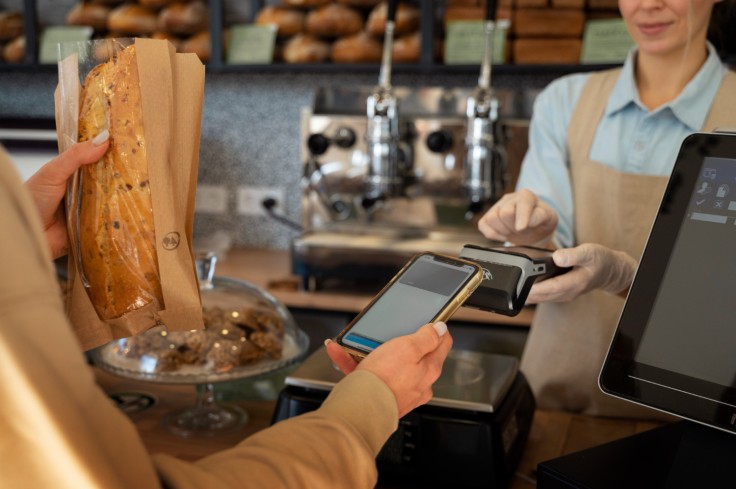
Point-of-sale or POS systems have become a main resource in how restaurants find success in their field. This technology has provided a more seamless and streamlined order and payment processing experience for restaurants, making them a must in the industry, regardless of flavor and cuisine.
With that, keep reading below to learn more about POS systems. Our comprehensive guide will explain what the technology is and how it works. Plus, we will provide the best tips for choosing the right tool for your restaurant.
Understanding POS Systems
Generally, a POS system combines hardware, software, and business technologies. It is a physical and virtual touchpoint for businesses to make and track sales. This service is commonly used in retail and hospitality, including restaurants, cafes, and bars.
To further understand POS systems, we're breaking it down into two major components.
Hardware
POS hardware includes all the tools to ring or record a sale and capture customer payment. It may come with various accessories, including a cash drawer, debit and credit card reader, a receipt printer, a separate screen for customers, and a barcode scanner.
Meanwhile, many POS systems today are increasingly equipped with digital tip jars.
Sometimes, standalone POS gateways are designed to pair with a customer's smart devices for payment collection. On the other hand, some readers can be plugged directly into a device or connected via Bluetooth.
Then, there are self-ordering kiosks. These standalone systems allow customers to place and pay for their orders.
Software
POS software captures and processes payments, tracks inventories, and collects customer data, among other functions. These programs can be categorized into on-premises and cloud-based.
On-premises or legacy systems facilitate payment processing, log sales, and other crucial information. Often, they're synched with accounting software and are only accessible through the POS terminal where it's installed.
Meanwhile, cloud-based POS is a program that syncs information from multiple terminals, offering businesses mobile and desktop access. It provides users with better flexibility. Plus, it's an excellent option for online stores or those with multiple locations or branches.
Benefits of POS Systems to Restaurants
As mentioned above, restaurants are among the most common establishments or services that use POS systems. Below are some known benefits of integrating POS systems into restaurants.
Improves Service Speed
Managing orders and taking payments can significantly slow a restaurant down, especially if it's overbooked. With a POS system, restaurants can streamline their operations.
For instance, servers won't have to run to the kitchen whenever they take orders. They can just input the orders into the system, and it will automatically inform the kitchen staff. Because of that, they have more time to take and deliver orders.
Reduces Error Rates
POS systems help improve numerous restaurant processes by reducing errors during operation. For instance, allowing servers to input orders into the system reduces miscommunication between the customer-facing staff and those in the kitchen. When that happens, orders will likely be more accurate, leading to fewer complaints and more satisfied customers.
Moreover, POS systems help automate payments. Through these tools, transactions are more accurate, reducing the likelihood of errors associated with handling cash manually. Plus, it prevents malicious employees from stealing cash since payments are recorded in the system.
Better Inventory Management
Inventory management is a crucial process for restaurants. Through POS systems, restaurants can keep track of their stocks in real-time. Doing so will allow them to control their supplies better and reduce overstocking. It will also enable them to make more informed purchasing decisions.
Supports Scalability
Finally, one of the many great things about POS systems is that they support restaurants as they expand. These tools allow businesses to manage multiple locations from a centralized dashboard, perfect for chains or franchises looking to open shops in new territories.
Aside from that, cloud-based POS systems allow owners to access and manage their data anywhere, making it easier to scale operations up or down.
Additionally, many POS solutions offer flexibility in terms of hardware and software, allowing businesses to add or remove terminals, devices, or features based on their needs. Scalable POS systems are also built to adopt or integrate other business applications like accounting software, inventory management, and customer relationship management tools (CRM).
Choosing the Right POS System
There are many factors to consider when investing in the best POS system for restaurants. However, there are certain elements you must prioritize when choosing.
For one, it must offer quality reporting capabilities for inventory, menus, guests, and employees. Your ideal POS system must help you track key performance indicators (KPIs) to gauge your restaurant's success.
A quality POS system must also be easy to use. It must have an intuitive interface that helps users place orders and process payments without issues. It must also enable seamless integration with various software and payment gateways.
Moreover, an excellent POS system must offer robust data security for its users. It must be properly equipped against breaches and other cybersecurity threats.
Plus, it must comply with specific regulations, including the Payment Application Data Security Standards (PA-DSS) and Payment Card Industry Data Security Standards (PCI-DSS).
Aside from the factors mentioned above, other key features you must look for in your ideal POS system include customization, flexibility, seamless order processing, and responsive support.
Equip Your Restaurant with the Right Tools
A POS system is an excellent addition to your restaurant. It can help boost your processes, reduce errors, and support your venture's expansion. While many options are available today, choosing the one that will elevate your operations further is still ideal.
Prioritize ease of use, performance, and security. Don't be afraid to start small or with what you can manage. The best thing about this technology is that you can adapt or integrate more programs and devices as your restaurant grows.









